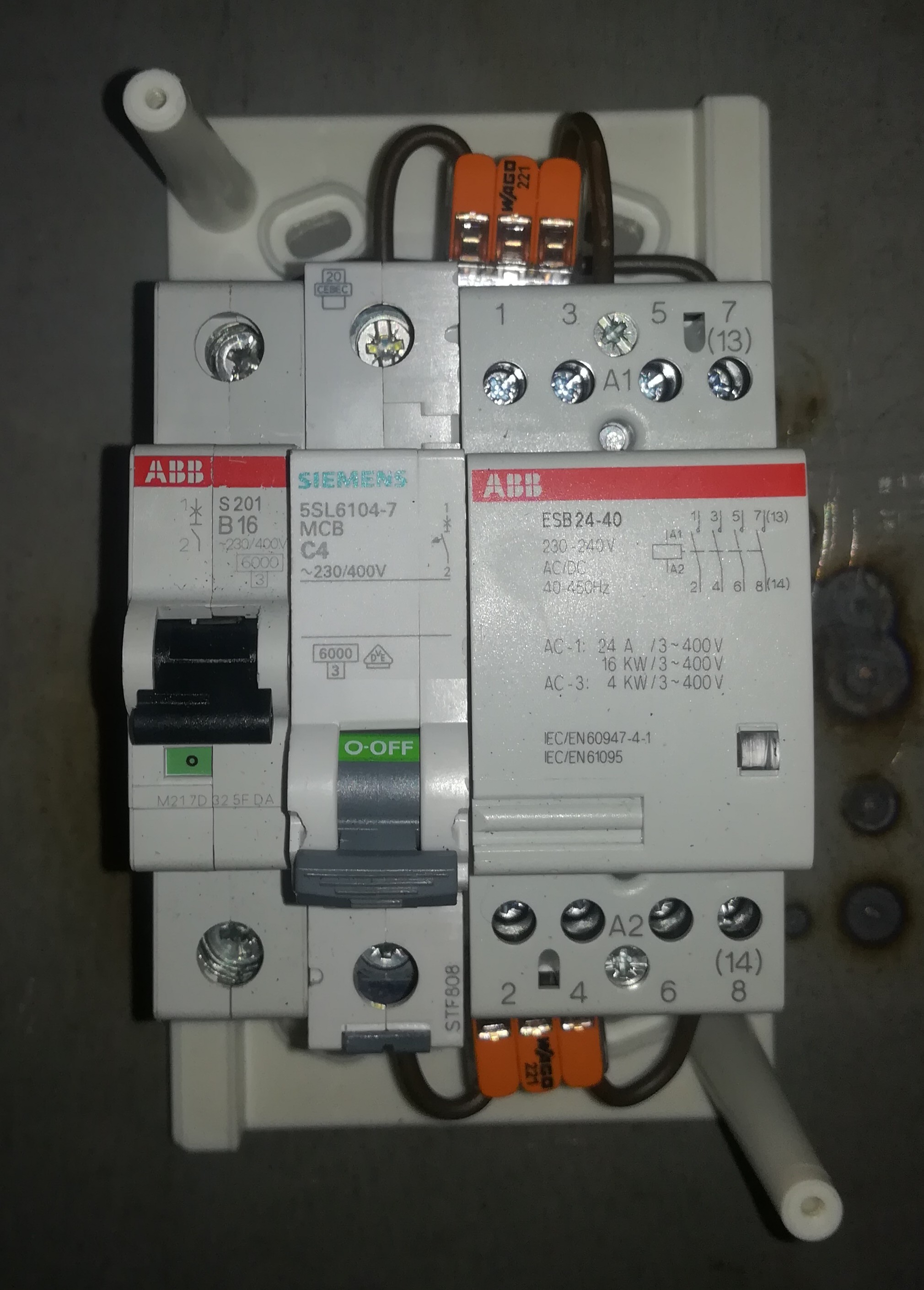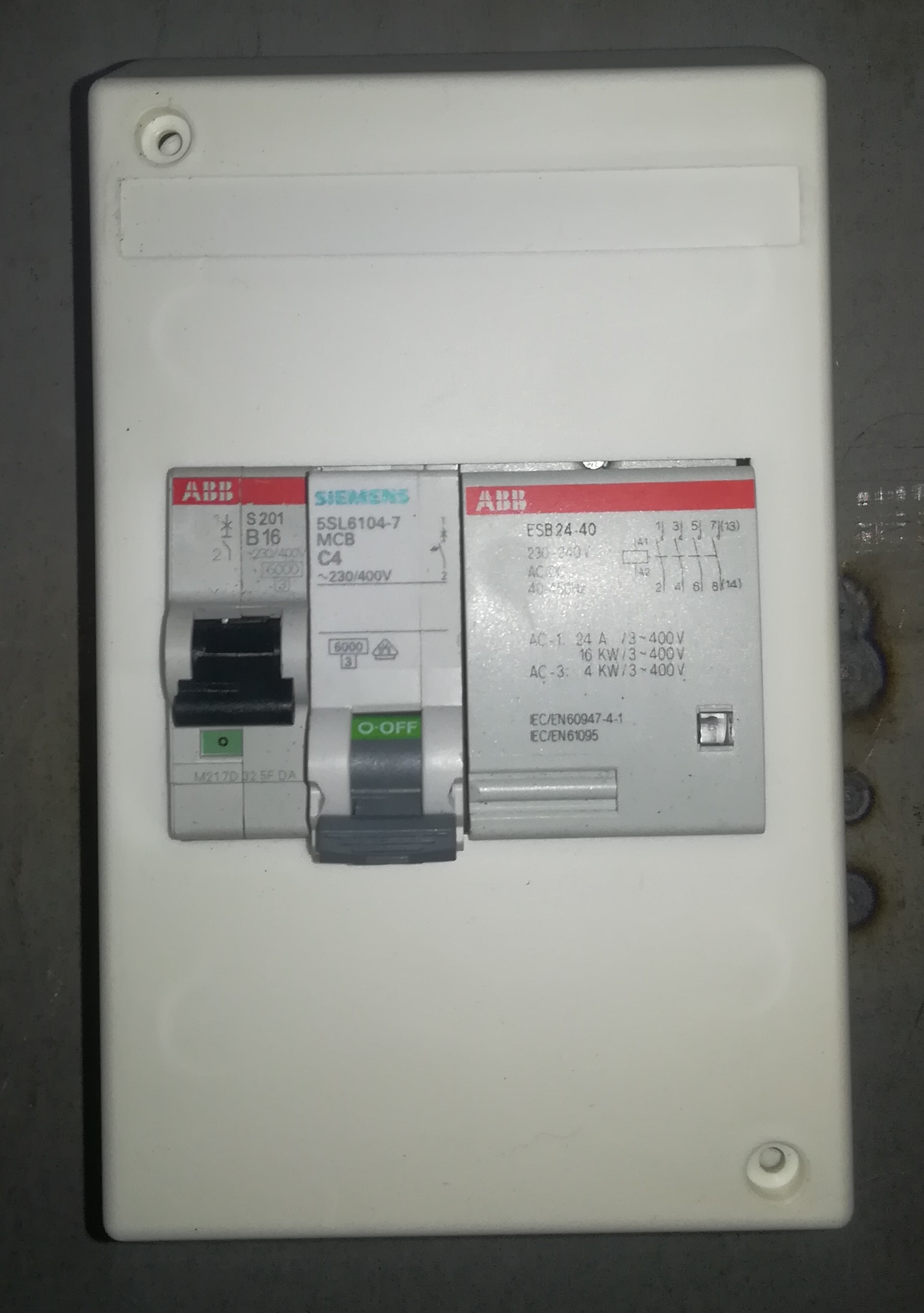I want to test printing with more heat and now where I have the phase-fired intensity controller I can test removing the resistor plate and replacing it with a circuit breaker and a contactor, which should trigger the filament runout function if the breaker trips.
If that happens, you would be able to fix what caused the tripping and continue printing after that. The rating of the circuit breaker would depend on the current the 50mm² cable and transformer can handle without getting too warm. Getting rid of the resistor plate would also reduce cost and simplify the build of the printer.
I tested it out and yes, I would say it is helpful for improving print quality. With more power the printed part fuses better together and I noticed some Interesting behavior.
I tested shorting the work current by driving the nozzle on the buildplate to see whether the breaker trips, but with a 10A breaker the copper nozzle melted a bit when I tried to increase the intensity to max level. So the circuit lost contact everytime befor the 10A breaker could trip. Will continue testing with a 6A breaker. With higher power while printing there is also more arcing.
I noticed that like on FDM printing the junction in the layer itself was stronger than the junction between the layers.
Added a C4 circuit breaker for protection. The breaker trips before anything overheats, so it should be a good choice.


B16 for the whole printer
C4 for the work current
Contactor for triggering filament runout function if the breaker trips.
(Just ordered one from ABB for more uniform looking)
 Dominik Meffert
Dominik Meffert
Discussions
Become a Hackaday.io Member
Create an account to leave a comment. Already have an account? Log In.
More current = even faster melting = more arcing. I'm starting to think that printer speed in that digitalalloys printer is not "cool to have" but required. Normal speed for plastic used for metal is like trying to print with plastic at milimeters/minute speed.
Are you sure? yes | no
Yes, that could be true. I will test it out. I think it could also be needed to keep the nozzle directly above the melted material like on fdm printing. Several weeks ago I sent an Email to Digital Aloys and last week they sent me an Email back with a link to their recent blog post which includes many infos about different metal printing methods and also a video of their printing method vs Wire DED, in which you can see that there is almost no gap between the nozzle and the melted material. It also seems like the material exits the nozzle already melted.
https://www.digitalalloys.com/blog/what-metals-can-you-print/
Have to read it again in detail, when I have more time.
Are you sure? yes | no